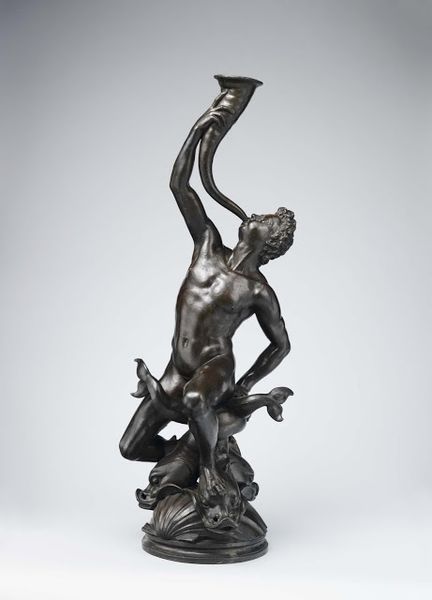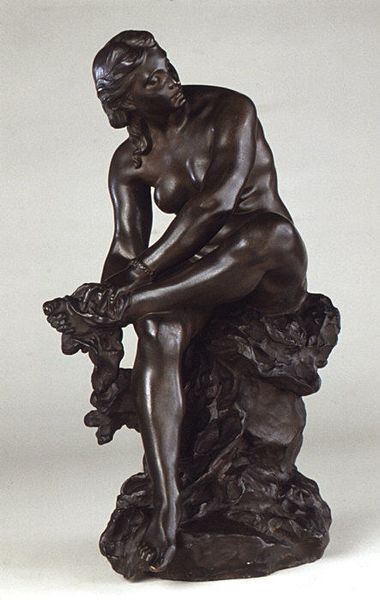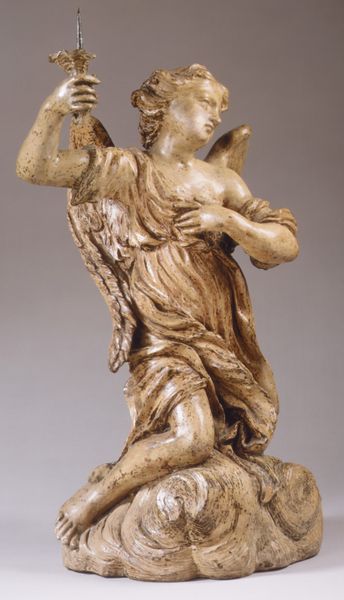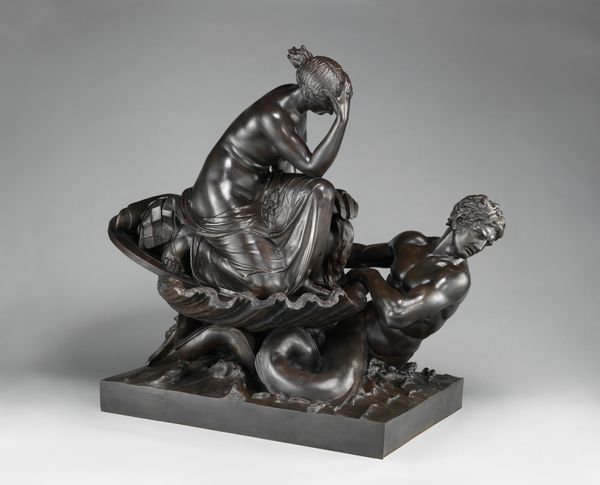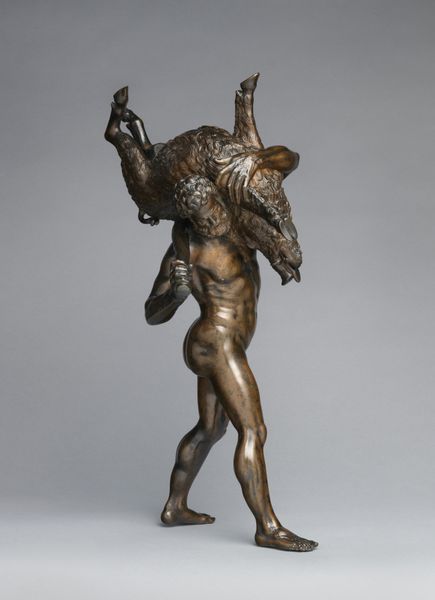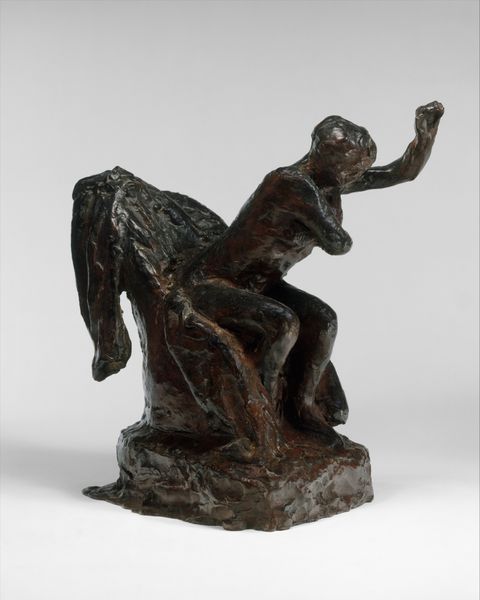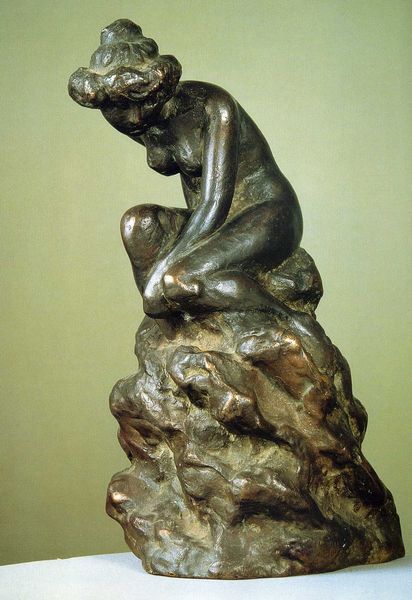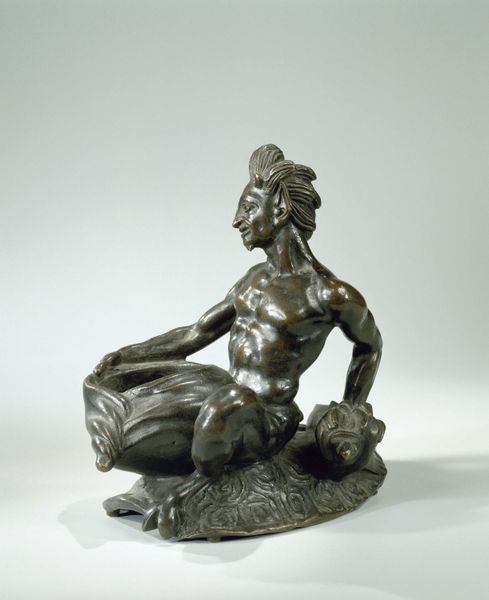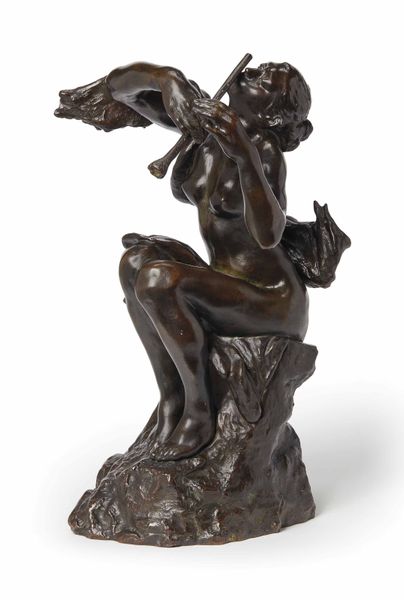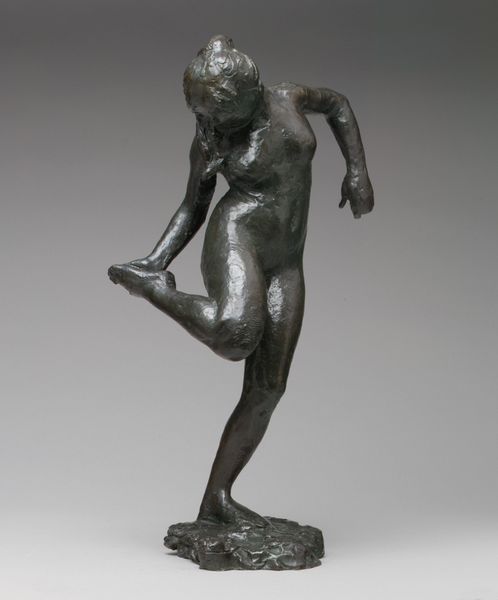
bronze, sculpture
#
baroque
#
sculpture
#
bronze
#
figuration
#
sculpture
#
decorative-art
Dimensions: Height: 25 1/2 in. (64.8 cm)
Copyright: Public Domain
Editor: Here we have “Boy Triton,” a bronze sculpture made around 1710. I’m really struck by the texture and how it seems to capture a fleeting moment, full of vitality. The way the boy is arching back while blowing the conch shell seems incredibly dynamic. What are your initial thoughts on the composition of this work? Curator: Note how the figure's torsion establishes a dramatic, spiraling line, rising from its base. The surface, rendered with a rich patination, interacts with light to further emphasize its carefully considered planes and volumes. Observe how the sculptor, Jonas Gutsche, masterfully manipulates bronze to evoke both fluidity and solidity in its subject. Editor: Fluidity and solidity--that's interesting! So you’re really looking at how the medium itself informs our perception? Curator: Precisely. Bronze as a material carries certain connotations, yet Gutsche subverts them, to an extent, by instilling the work with a life force—a tension. One must consider, however, if this sense of vivacity stems solely from its structural form or if inherent mythological concepts also affect one's perception of vitality within the depicted subject matter. Editor: Hmm, I hadn't thought about it that way. So, by focusing on form and material, we can decode how the artwork achieves a specific expressive quality, even before we consider mythological themes. Curator: Precisely. It is the arrangement, after all, the semiotic unfolding of these basic materials that construct the ultimate artistic symbol. Editor: Okay, I think I have a better sense now of how to read the sculpture not just for what it represents but for what it is made of and how it is structured. Curator: Excellent! Focusing on those tangible components enables, facilitates more refined interpretive processes.
Comments
No comments
Be the first to comment and join the conversation on the ultimate creative platform.
